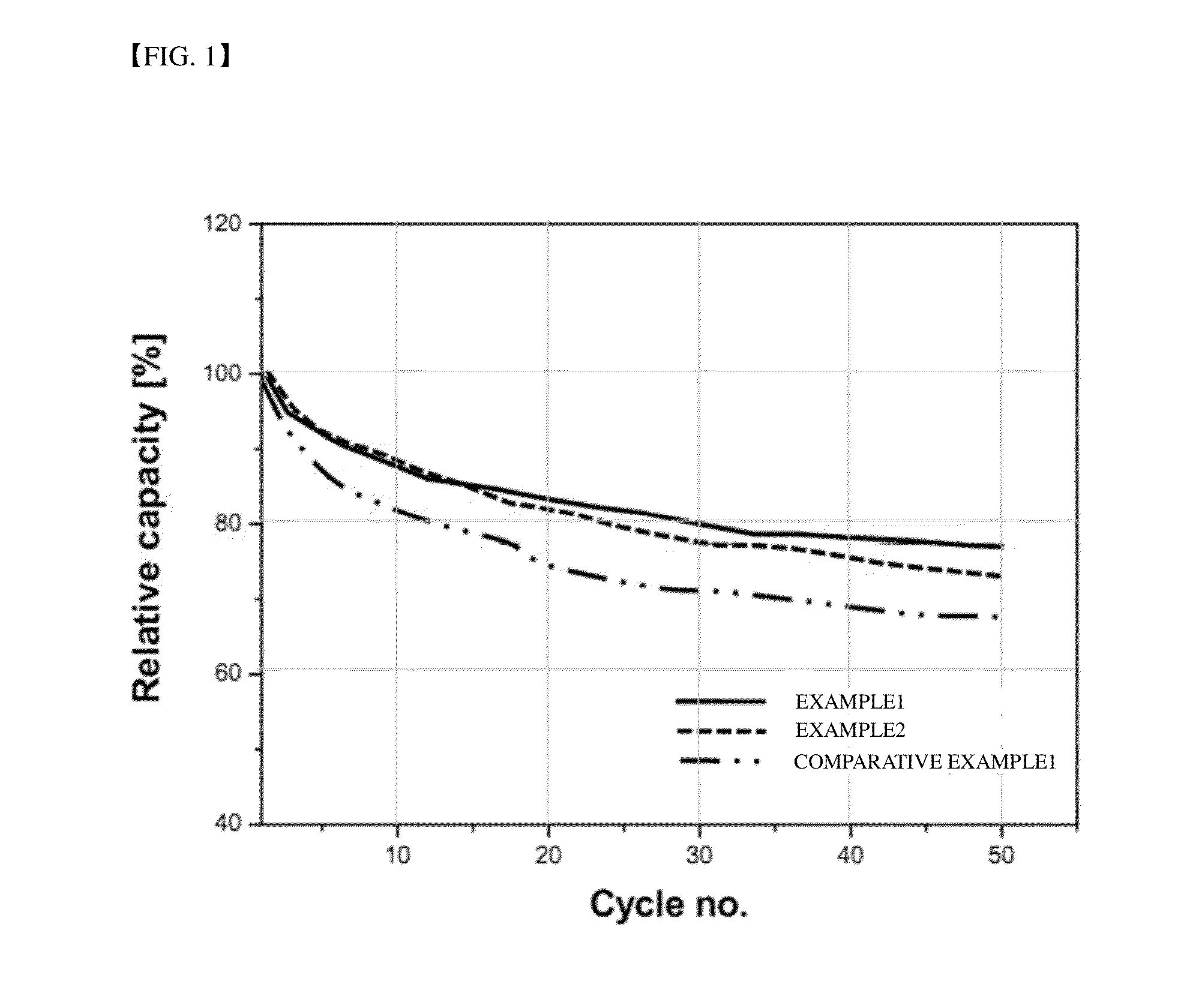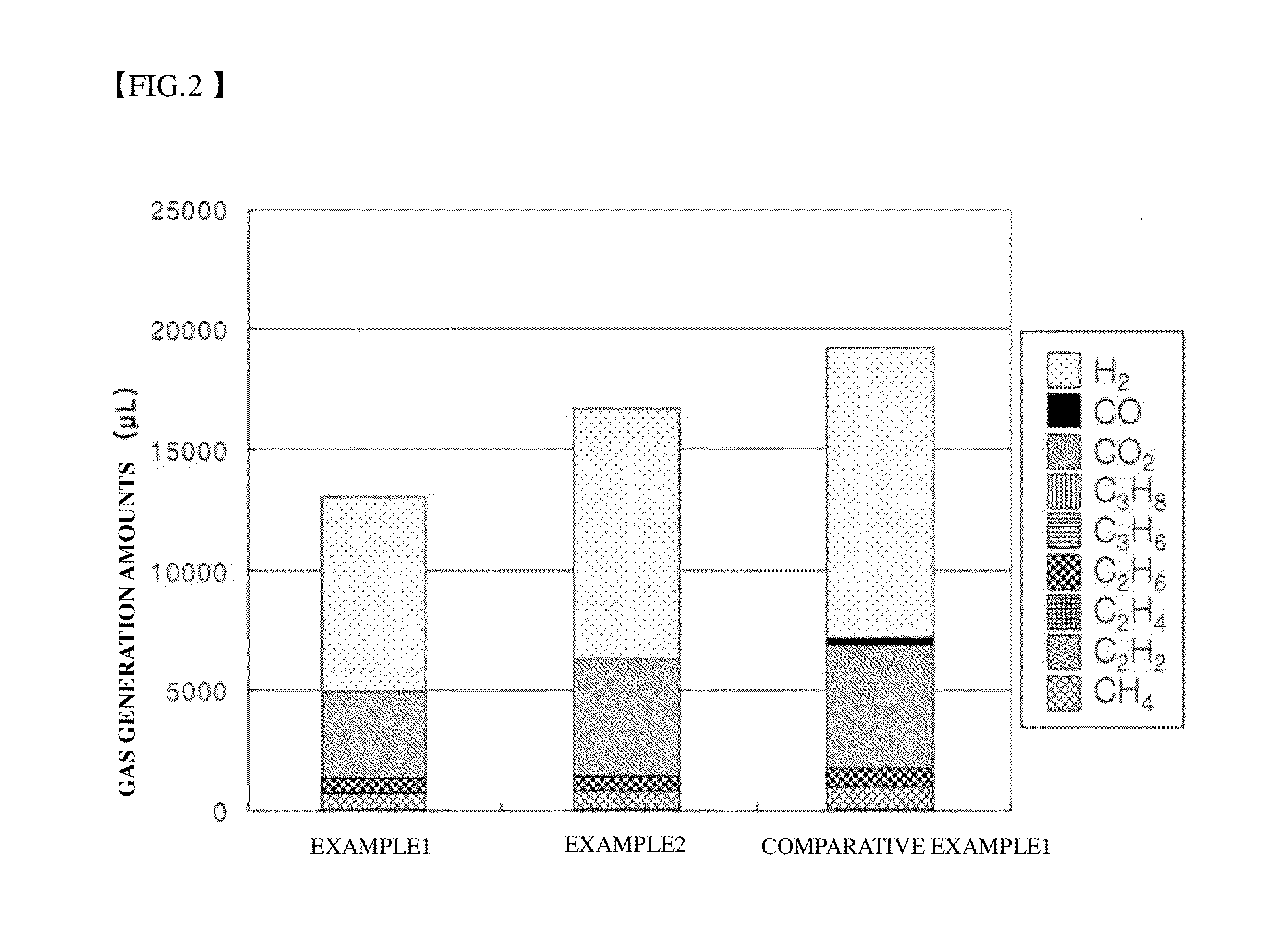Lithium battery having higher performance
- Summary
- Abstract
- Description
- Claims
- Application Information
AI Technical Summary
Benefits of technology
Problems solved by technology
Method used
Image
Examples
example 1
[0052]Li1.33Ti1.67O4 as an anode active material, Denka black as a conductive material, and PVdF as a binder were added in a weight ratio of 90:5:5 to NMP and mixed therein to prepare an anode mixture. Subsequently, the anode mixture was coated onto 20 μm Al foil and the coated Al foil was pressed and dried, thereby completing fabrication of an anode of 6.6 mg / cm2.
[0053]In addition, LiNi0.5Mn1.5O4 as a cathode active material, Denka black as a conductive material, and PVdF as a binder were added in a weight ratio of 90:5:5 to NMP and mixed therein to prepare a cathode mixture. Subsequently, the cathode mixture was coated onto 20 μm Al foil and the coated Al foil was pressed and dried, thereby completing fabrication of a cathode of 8.6 mg / cm2.
[0054]An electrode assembly was manufactured by interposing separators (thickness: 20 μm) between the prepared cathodes and anodes. After accommodating the electrode assembly in a pouch-type battery case, a lithium salt-containing non-aqueous el...
example 2
[0055]A lithium secondary battery was manufactured in the same manner as in Example 1, except that an anode of 6.6 mg / cm2 and a cathode of 7.8 mg / cm2 were manufactured.
experimental example 1
[0057]Cut-off voltages of the secondary batteries manufactured according to Examples 1 and 2 and Comparative Example 1 were set to 3.5 V and anode and cathode potentials of each secondary battery were measured when the cut-off voltage was reached. Results are shown in Table 1 below.
TABLE 1Anode potential (V)Cathode potential (V)Example 11.34.8Example 21.44.9Comparative 1.555.05Example 1
[0058]Referring to Table 1, in the secondary batteries of Examples 1 and 2, the potentials of the anodes are 1.3 and 1.4 V when the cut-off voltage is reached and thus the potentials of the cathodes are 4.8 and 4.9 V and, accordingly, the potential of the cathode reaches the cut-off voltage before reaching an oxidation potential of an electrolyte. By contrast, in the secondary battery of Comparative Example 1, the potential of the anode is 1.55 V when the cut-off voltage is reached and thus the potential of the cathode is 5.05 V and thus reaches an oxidation potential of an electrolyte.
PUM
 Login to View More
Login to View More Abstract
Description
Claims
Application Information
 Login to View More
Login to View More - R&D
- Intellectual Property
- Life Sciences
- Materials
- Tech Scout
- Unparalleled Data Quality
- Higher Quality Content
- 60% Fewer Hallucinations
Browse by: Latest US Patents, China's latest patents, Technical Efficacy Thesaurus, Application Domain, Technology Topic, Popular Technical Reports.
© 2025 PatSnap. All rights reserved.Legal|Privacy policy|Modern Slavery Act Transparency Statement|Sitemap|About US| Contact US: help@patsnap.com


